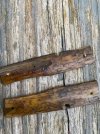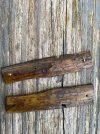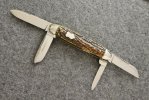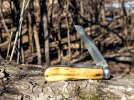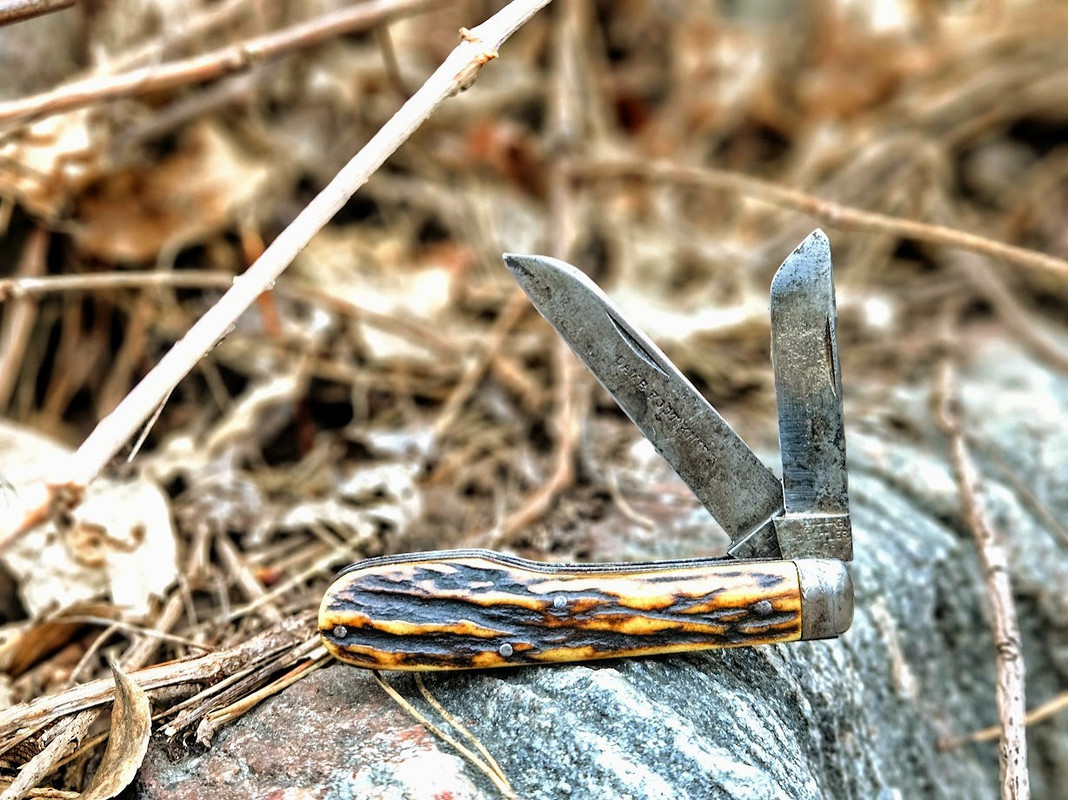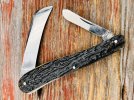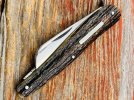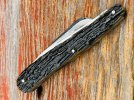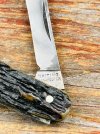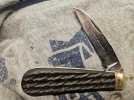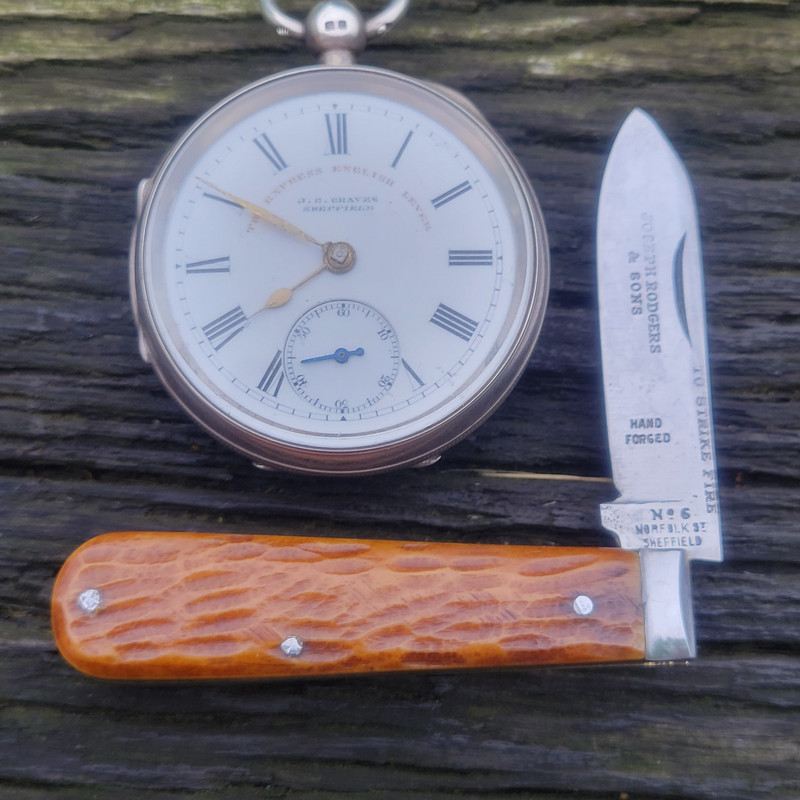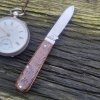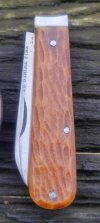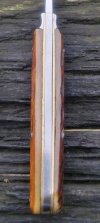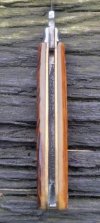wlfryjr
Gold Member
- Joined
- Oct 20, 2011
- Messages
- 1,980
Thanks Will, it's odd pattern that I would call a sleeve board serpentine jack with blades at either end. And I'm a sucker for pinched bolsters.
Stag is my favorite handle material not just because of its beauty, but also because it is found in endless types and colors.
That is a fantastic example shown from the "Sheffield Exhibition Knives" book which also shows how small and fine natural stag can look.
The words "pressed stag" have been repeatedly used and is simply not true. Stag is bone which is in all practically, not pressable.
Could someone soften bone enough to press? Possibly, but certainly not economically or reasonably to use for knife handles.
Horn is made of keratin which is similar to human hair and fingernails, and is softer and able to be pressed into patterns.
Enclosed are some quotes from two of the most respected knife collectors on the AAPK forum, and one from one of the most respected fellows on this forum.
"As easy as it is to dye and jig bone why would anyone want to go to all the trouble, expense and time it would take to try to press bone? Could you possibly press bone isn't the point, the point is why would anyone even try? Pressing horn was done to get horn to look like something other than horn, typically bone or stag. Would you go to all the trouble of trying to press bone to make it look like pressed horn? I don't think so. The idea itself is unreasonable."
If I have seen further it is by standing on the shoulders of giants.
Wayne
Ridgegrass wrote: ↑Wed Jan 22, 2025 6:37 pm. Pressed bone or horn,or worn stag (?).Only American-made knife I've ever seen or had in pressed bone if it is, J.O'.
"No such thing as pressed bone, pressed horn yes"
AAPK Janitor
369
"I'm convinced it's Stag, Lyle. I don't think bone can get "fluid" (with heat or chemicals) enough to reshape - it's too tough and firm. Horn can be pressed with heat, but the fibers are even larger than Stag, and we'd see them!!"
I have great respect for you Neal also for Wayne , Dimitri and John. I call it pressed stag because the respected authoritarians before us did so, and two you know and respect still do. I have no proof of anything, just lingering inadequate and unanswered questions . I've long since known it's not horn, that's evident.
There have never been an answer as to why this handle material was never used on a knife made on American soil. This question bothers me. The time frame of it ; ONLY late 1800's and very early 1900's. Thinking the deer went extinct is less logical by far than pressing bone. I'm not advocating that's what it is , just stating a fact. Let me reiterate, I don't believe it's natural stag, it may be, but if it is it's weird . I plan on having it forensically analyzed to quell all suspicions.
The most questionable observation is I've never seen any natural stag handled knife age like pressed stag. It loses coloration and wears thin. This is German pressed stag. I've seen a noticeable difference between Sheffield and German pressed stag, but NO American. Weird.
